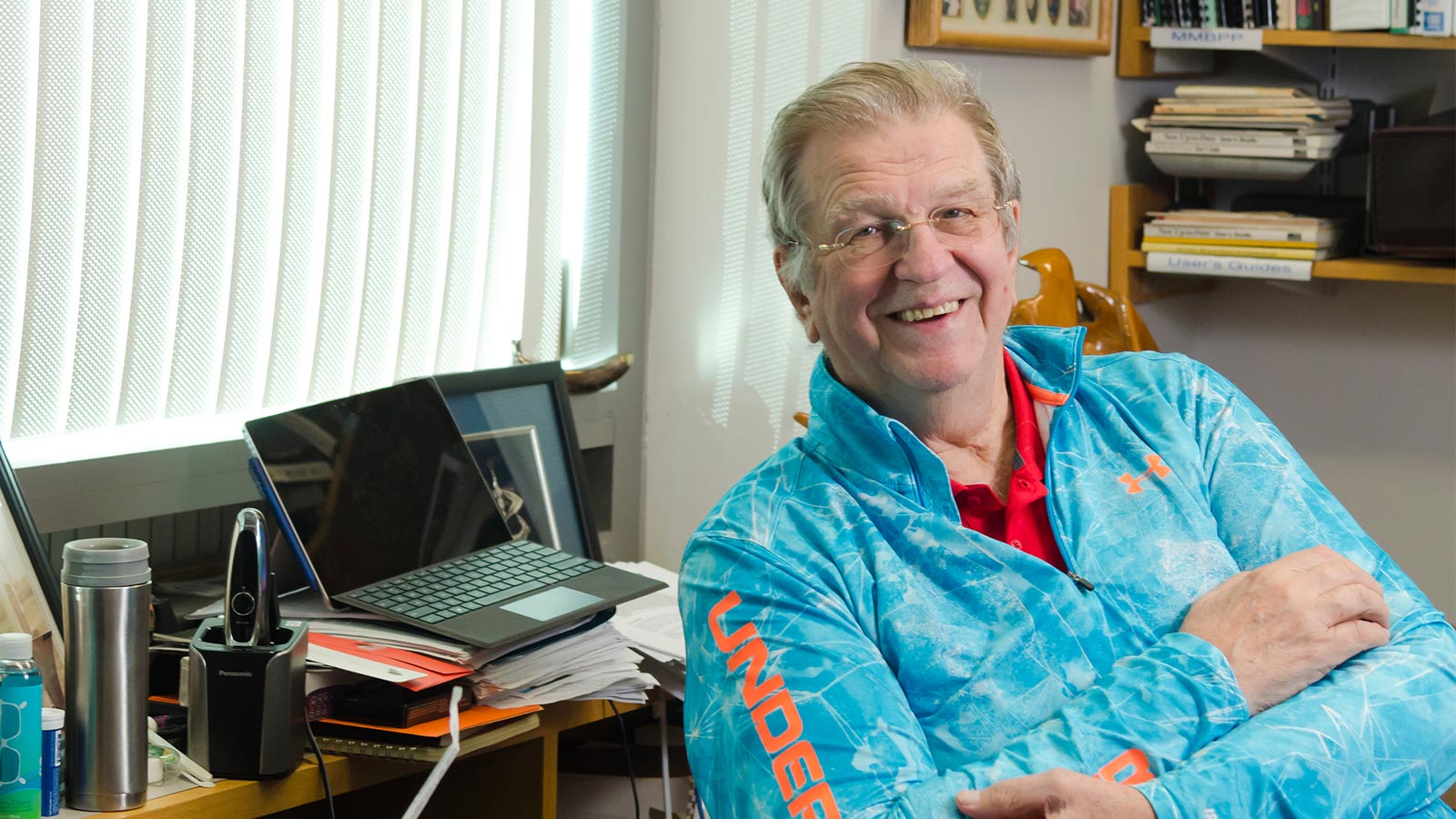Education
- ScD, 1966, Massachusetts Institute of Technology
- BS, 1962, Food Science, University of Illinois, Urbana-Champaign
Research Summary
We leverage an interdisciplinary approach to metabolic engineering — focusing on the fundamental physiology, biochemistry and molecular genetics of important organisms to determine key factors that regulate the synthesis of different biomolecules. We support a broad range of interests, examining amino acid metabolism in Corynebacterium glutamicum, bioremediation and bioconversion processes in Rhodococcus, and biopolymer synthesis in Gram-negative bacteria. As for eukaryotic systems, we study both lipid biosynthesis and embryogensis in oil palm, as well as the accumulation of secondary metabolites in tropical plants.Recent Publications
- Engineering carbon source division of labor for efficient α-carotene production in Corynebacterium glutamicum. Li, K, Li, C, Liu, CG, Zhao, XQ, Ou, R, Swofford, CA, Bai, FW, Stephanopoulos, G, Sinskey, AJ. 2024. Metab Eng 84, 117-127.
doi: 10.1016/j.ymben.2024.06.008PMID:38901555 - Analysis of Poly(ethylene terephthalate) degradation kinetics of evolved IsPETase variants using a surface crowding model. Zhong-Johnson, EZL, Dong, Z, Canova, CT, Destro, F, Cañellas, M, Hoffman, MC, Maréchal, J, Johnson, TM, Zheng, M, Schlau-Cohen, GS et al.. 2024. J Biol Chem 300, 105783.
doi: 10.1016/j.jbc.2024.105783PMID:38395309 - Structure and specificity of an anti-chloramphenicol single domain antibody for detection of amphenicol residues. Swofford, CA, Nordeen, SA, Chen, L, Desai, MM, Chen, J, Springs, SL, Schwartz, TU, Sinskey, AJ. 2022. Protein Sci 31, e4457.
doi: 10.1002/pro.4457PMID:36153664 - Heterologous production of α-Carotene in Corynebacterium glutamicum using a multi-copy chromosomal integration method. Li, C, Swofford, CA, Rückert, C, Chatzivasileiou, AO, Ou, RW, Opdensteinen, P, Luttermann, T, Zhou, K, Stephanopoulos, G, Jones Prather, KL et al.. 2021. Bioresour Technol 341, 125782.
doi: 10.1016/j.biortech.2021.125782PMID:34419880 - Optimizing recombineering in Corynebacterium glutamicum. Li, C, Swofford, CA, Rückert, C, Sinskey, AJ. 2021. Biotechnol Bioeng 118, 2255-2264.
doi: 10.1002/bit.27737PMID:33650120 - An absorbance method for analysis of enzymatic degradation kinetics of poly(ethylene terephthalate) films. Zhong-Johnson, EZL, Voigt, CA, Sinskey, AJ. 2021. Sci Rep 11, 928.
doi: 10.1038/s41598-020-79031-5PMID:33441590 - Modular engineering for microbial production of carotenoids. Li, C, Swofford, CA, Sinskey, AJ. 2020. Metab Eng Commun 10, e00118.
doi: 10.1016/j.mec.2019.e00118PMID:31908924 - Correction for Brigham et al., "Whole-Genome Microarray and Gene Deletion Studies Reveal Regulation of the Polyhydroxyalkanoate Production Cycle by the Stringent Response in Ralstonia eutropha H16". Brigham, CJ, Speth, DR, Rha, C, Sinskey, AJ. 2017. Appl Environ Microbiol 83, .
doi: 10.1128/AEM.01216-17PMID:28716865 - Metabolic engineering Corynebacterium glutamicum to produce triacylglycerols. Plassmeier, J, Li, Y, Rueckert, C, Sinskey, AJ. 2016. Metab Eng 33, 86-97.
doi: 10.1016/j.ymben.2015.11.002PMID:26645801 - Lignocellulose-derived inhibitors improve lipid extraction from wet Rhodococcus opacus cells. Kurosawa, K, Anthony Debono, C, Sinskey, AJ. 2015. Bioresour Technol 193, 206-12.
doi: 10.1016/j.biortech.2015.05.103PMID:26141279

